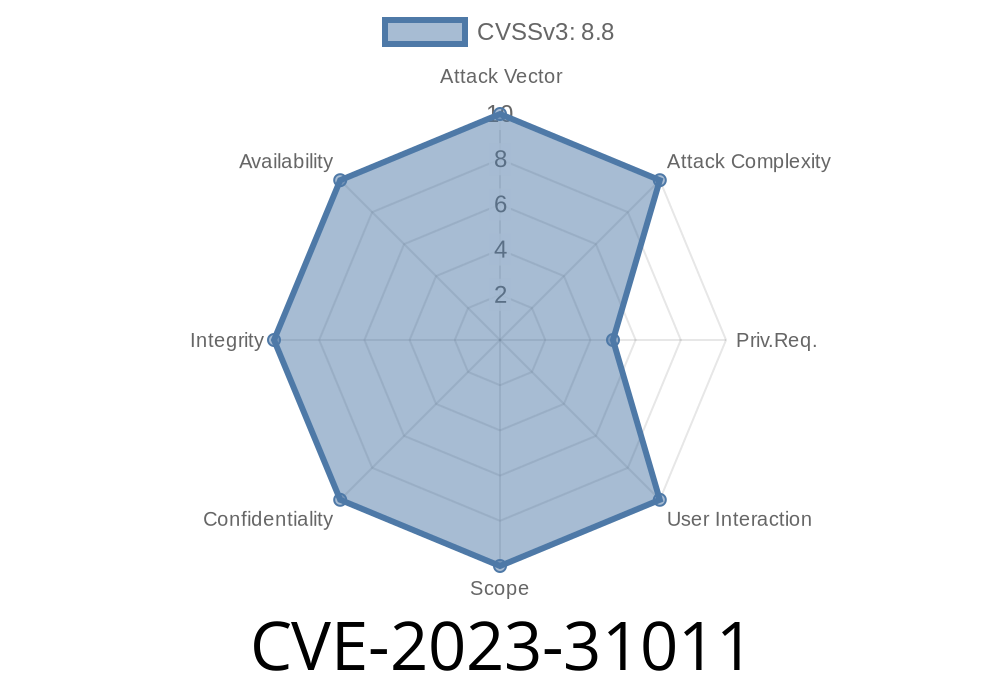In this post, we will discuss the vulnerability found in the NVIDIA DGX H100 Baseboard Management Controller (BMC) chip. The identified vulnerability, designated as CVE-2023-31011, specifically affects the REST service of the BMC chip. If exploited successfully, an attacker can cause improper input validation, which may, in turn, lead to escalation of privileges and information disclosure. Our discussion will include a thorough analysis of the vulnerability, potential attack vectors, and relevant code snippets to demonstrate the exploit in action. By the end of this post, you will have a complete understanding of CVE-2023-31011 and ways to mitigate its potential effects.
The Vulnerability
CVE-2023-31011 affects NVIDIA's DGX H100 BMC chip, which is an essential component of the company's high-performance, deep-learning workstations and servers. The vulnerability lies in the chip's REST service, which is responsible for managing HTTP-based communication used for data transfer and system administration. The National Vulnerability Database (NVD) provides more details on the vulnerability and its consequences:
- NVD Listing: CVE-2023-31011
Exploit Details
The vulnerability arises from insufficient input validation. It affects the NVIDIA DGX H100 BMC's REST service, allowing an attacker to input malicious data that may bypass input validation checks, potentially leading to further exploitation and unauthorized actions on the target system. Such a vulnerability may have serious implications, as it can grant the attacker escalated privileges and access to sensitive information.
The malicious input could come in the form of a specially crafted HTTP request or parameters modified during the session to bypass authentication. The following code snippet illustrates an example where an input parameter with malicious data may be submitted through an HTTP POST request:
import requests
target_url = 'http://example.com/api/v1/auth/login';
headers = {'Content-Type': 'application/json'}
fake_user = {
'username': 'admin',
'password': 'P@sswrd'
}
response = requests.post(target_url, headers=headers, json=fake_user)
In this example, an attacker could potentially alter the fake_user variable with a malicious payload designed to exploit the vulnerability and escalate privileges or gain access to sensitive information.
Mitigations
To protect your system from the CVE-2023-31011 vulnerability, consider the following mitigation steps:
1. Update Firmware: NVIDIA has released a firmware update (version 20.10.1) that addresses the vulnerability. Users of affected systems should apply the update as soon as possible. The update is available for download from the NVIDIA support website: DGX H100 Firmware Update.
2. Configure Network Access: Restrict access to the BMC chip and its REST service to authorized administrators and trusted networks only. Consider using firewalls, VLANs, or VPNs to segment and secure network access.
3. Monitor System Activity: Regularly review system logs and network traffic for signs of unauthorized activity. Intrusion detection systems (IDS) or other security monitoring solutions can help detect and alert on potential malicious activities.
4. Enforce Strong Authentication: Use strong, unique, and regularly updated passwords for BMC access. Two-factor authentication (2FA) can provide an additional layer of security.
Conclusion
CVE-2023-31011 is a serious vulnerability in NVIDIA's DGX H100 BMC chip, with the potential to grant attackers escalated privileges and access to sensitive information. By understanding the nature of the vulnerability and applying the recommended mitigation steps, you can better protect your systems from potential exploits. Stay vigilant and proactive in safeguarding your infrastructure from vulnerabilities like CVE-2023-31011 to maintain a secure and efficient environment.
Timeline
Published on: 09/20/2023 02:15:00 UTC
Last modified on: 09/22/2023 16:11:00 UTC
